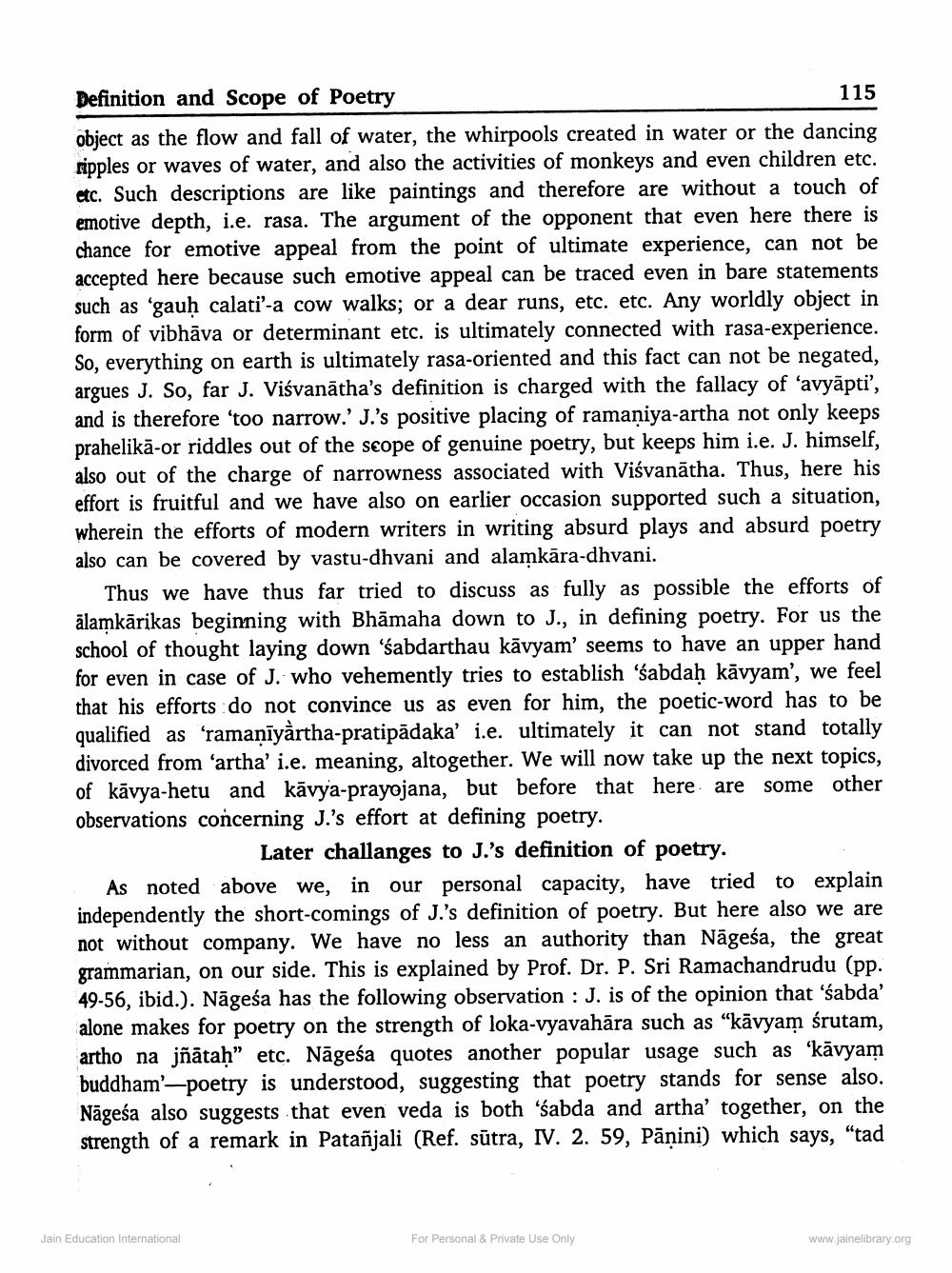________________
Definition and Scope of Poetry
115
object as the flow and fall of water, the whirpools created in water or the dancing ripples or waves of water, and also the activities of monkeys and even children etc. etc. Such descriptions are like paintings and therefore are without a touch of emotive depth, i.e. rasa. The argument of the opponent that even here there is chance for emotive appeal from the point of ultimate experience, can not be accepted here because such emotive appeal can be traced even in bare statements such as 'gauḥ calati'-a cow walks; or a dear runs, etc. etc. Any worldly object in form of vibhāva or determinant etc. is ultimately connected with rasa-experience. So, everything on earth is ultimately rasa-oriented and this fact can not be negated, argues J. So, far J. Viśvanātha's definition is charged with the fallacy of 'avyāpti', and is therefore 'too narrow.'J.'s positive placing of ramaniya-artha not only keeps prahelikā-or riddles out of the scope of genuine poetry, but keeps him i.e. J. himself, also out of the charge of narrowness associated with Viśvanātha. Thus, here his effort is fruitful and we have also on earlier occasion supported such a situation, wherein the efforts of modern writers in writing absurd plays and absurd poetry also can be covered by vastu-dhvani and alamkāra-dhvani.
Thus we have thus far tried to discuss as fully as possible the efforts of ālamkārikas beginning with Bhāmaha down to J., in defining poetry. For us the school of thought laying down 'sabdarthau kävyam' seems to have an for even in case of J. who vehemently tries to establish 'sabdah kāvyam', we feel that his efforts do not convince us as even for him, the poetic-word has to be qualified as 'ramanīyārtha-pratipādaka' i.e. ultimately it can not stand totally divorced from 'artha' i.e. meaning, altogether. We will now take up the next topics, of kāvya-hetu and kāvya-prayojana, but before that here are some other observations concerning J.'s effort at defining poetry.
Later challanges to J.'s definition of poetry. As noted above we, in our personal capacity, have tried to explain independently the short-comings of J.'s definition of poetry. But here also we are not without company. We have no less an authority than Nägeća, the great grammarian, on our side. This is explained by Prof. Dr. P. Sri Ramachandrudu (pp. 49-56, ibid.). Nāgesa has the following observation : J. is of the opinion that's alone makes for poetry on the strength of loka-vyavahāra such as “kāvyam śrutam, artho na jñātaḥ” etc. Nāgesa quotes another popular usage such as ‘kāvyam buddham'-poetry is understood, suggesting that poetry stands for sense also. Nāgeśa also suggests that even veda is both 'sabda and artha' together, on the strength of a remark in Patañjali (Ref. sūtra, IV. 2. 59, Pānini) which says, “tad
Jain Education International
For Personal & Private Use Only
www.jainelibrary.org




